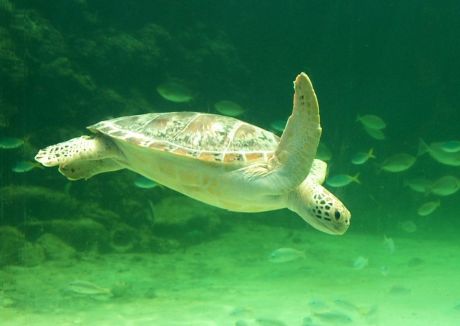Biodiversity conservation and clean power are two pressing concerns for modern policymakers. Marine protected areas (MPAs) are currently the best approach for marine conservation, while offshore wind farms (OWFs) offer clean power in the marine environment.
The project
COCONET (Towards coast to coast networks of marine protected areas (from the shore to the high and deep sea), coupled with sea-based wind energy potential) is producing guidelines to establish networks of MPAs in the Mediterranean and Black Seas based on natural connections. COCONET will also produce a wind atlas of both basins in preparation for establishing OWFs in the MPA networks.
The project started by analysing whether MPA networks will be feasible in these seas, based on literature reviews, workshops and interviews. Researchers also looked at the environmental impact of OWFs and how to minimise it.
MPA networks offer improved biodiversity conservation; therefore, project partners are identifying a set of locations that are connected with each other, sharing common ecosystem features. Guidelines will be drawn up for establishing coherent networks of MPAs in the Mediterranean and Black Seas.
Two pilot projects have already been set up for the Black Sea and Mediterranean Sea. These projects are intended to be the areas where concepts developed by COCONET can be applied in the real world. COCONET has used these pilot areas to gather biological, geological and oceanographic data about how current MPAs are connected.
COCONET will help to conserve Europe's natural heritage by protecting vulnerable marine ecosystems and the plant and animal species they contain. In addition, it will encourage new populations to develop and help combat global warming by promoting clean energy through the building of OWFs.
Concerning the cells of ecosystem functioning, based on realized connectivity, these are the conservation units that will have to be employed to design the networks. The cells are parts of the marine space that are highly connected by currents, where the connections among populations are realized. The concept requires knowledge of physical oceanography and of ecology and biology, so reaching the holistic approach invoked by the call.
The other concept is the link of the descriptors of Good Environmental Status of the Marine Strategy Framework Directive as the guidelines to design and assess the efficacy of the networks. This will not require further directives, since the description of GES fits perfectly with the aims of the networks. In synthesis, the Networks of MPAs should be the tool to enforce and to monitor the efficacy of the Good Environmental Status, having the MPAs as the nodes of enforcement and control, along with other local and international authorities.
The identification of the Cells of Ecosystem Functioning is a pre-requisite for the guidelines, and the actual knowledge is still too fragmented to allow for the identification of these units in both basins.

